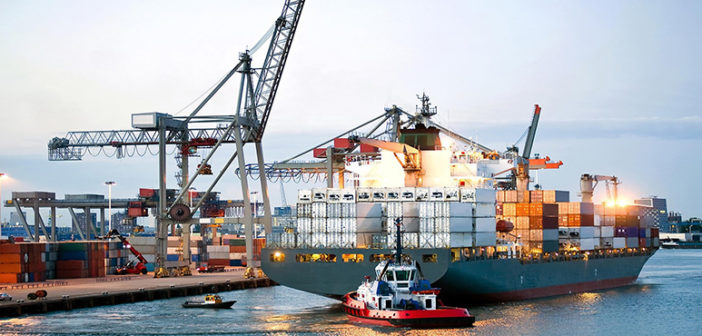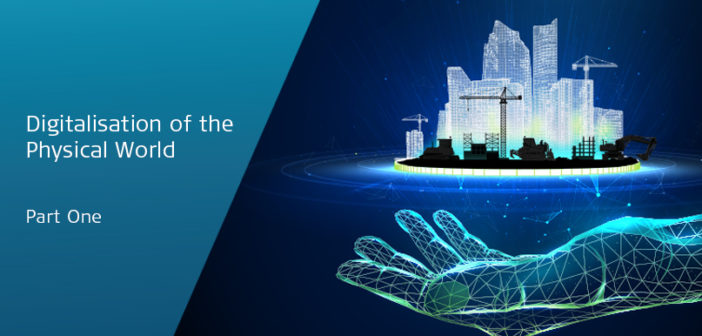
Juergen Mayer, President Reality Capture Division, Hexagon Geosystems
The ongoing pandemic has forced many businesses to find new digital ways of working, adopting new tools and processes earlier than planned. To help our customers drive forwards during these challenging times, we held a virtual event – HxGN LIVE Smart Digital Transformation – to explore the opportunities created by reality capture and digital twins to work smartly and efficiently.
Here I share the main points of my keynote speech with you. I look at the digital revolution in surveying: how reality capture is no longer a technology just for specialists but is easy-to-use – and transformative – in a wide range of applications, particularly in the construction industries.
I set the scene for my colleague Faheem Khan, our Vice President, Survey Solutions, who explores how this works in practice. By explaining the four phases of reality capture, Faheem shows how reality capture enables meaningful data to be collected at every stage of a project, driving profitability. I highly recommend the summary of his talk, which you can find at Digitalisation of our physical world through reality capture technology: Part two.

Drivers of digitalisation: the macro-economic trends
The world is changing rapidly: population growth, advances in technology and a focus on sustainability have a profound effect on our lives. There have been and will continue to be fast-moving and significant shifts in production locations for our goods and services. For the manufacturing industries, this drives the need to build facilities anywhere and anytime. For logistics, we need to enable more efficient shipbuilding to move goods.
The urgent need for sustainability affects all industries, to give the example of construction, new buildings need to be environmentally friendly, adaptable to new energy sources and multi-functional. They need to include green technologies and to provide green spaces for residents. This trend is driving the need for digital records of projects, including 3D digital plans and models to support as-built checks and building maintenance as part of the BIM (Building Information Modelling) framework. We need to be more efficient at every stage of the building process.
Digging a bit deeper into the topic of BIM, due to global urbanisation there is a growing number of complex, large-scale projects literally creating new districts and cities. These projects require improved connectivity between the construction site and head office as well as across multiple parties and geographies. The need for technical solutions to connect sites and teams more easily and quickly has become even more important. And BIM is not only for big projects. The need for more collaborative digital processes that connect both the site and office are increasingly in demand for any project that seeks efficiency. Technology is an enabler that allows BIM to be implemented throughout the process, from design office software, through to connected instruments on the construction site, to visualisation and interaction with a BIM model. The dynamic flow of data between office and site bridges the gap, allowing the digital world to better represent and interact with reality.
Our final macro trend driving digital transformation, which almost goes without saying, is the proliferation of data. In 2003, there were five Exabytes of data in the world. An Exabyte is approximately 1,000 Petabytes or one billion Gigabytes. In 2011, eight years later, five Exabytes were created every two days, another five years on in 2013, five Exabytes were created every 10 minutes. Capacity and capability have developed hand in hand. Innovations in products and software have enabled more accurate information to be captured and shared easily and quickly. This is having a profound effect on the construction industry with technical innovation supporting the industry’s digital transformation and the adoption, for example of digital twins – the digital reality of the physical world.

Digital transformation driving innovation in the construction industry
We take a closer look now at the overall impact of these macro trends on digital innovation in the construction industry. Increased productivity and efficiency have always been important in construction – now data management departments in building construction companies can consider efficiency increases and cost savings in double-digit growth rates. How is this possible? By better coordinating data between all the key stakeholders involved in the process from the beginning to identify critical issues and mitigate the risks.
Sharing information – digital data – between all parties, through all stages of the construction process from concept to completion, can help bring the industry into the future and reduce legacy challenges such as delays and cost overruns. By aligning to BIM principles and having a central data hub of accurate and up-to-date information on the vision of the desired outcome, and the current status of the project, there will be fewer inconsistencies in what everyone involved in the project is working towards. Improved digital practices and tools can help bring projects in on time and on budget by making everyone involved more productive and by eliminating mistakes.

Digital innovation in reality capture
Hexagon is a global leader in sensor, software and autonomous solutions. Within Leica Geosystems, part of Hexagon, we focus on several key developments, including reality capture. Firstly, location intelligence and new technologies around positioning, mainly LiDAR and image-based SLAM (Simultaneous Localisation And Mapping). Secondly, visual accuracy. With more than 200 years of history, measuring and positioning technology is part of our core DNA and an area that we continue to innovate.
Our goal is to continue to bring different aspects of camera technology into reality capture, including 360-degree cameras. Finally, our focus is on design: enabling products to be used where and when you need them and how you want them to work.
The recent history of 3D laser scanners is an excellent example of digital innovation. This technology creates a digital replica of a building – or any other object – by producing a point cloud, a set of data points in space. These point clouds can then be meshed and rendered into 3D CAD models for visualisation and customisation. Ten years ago, it would take two or three operators a whole day on a job site to create a digital scan using a scanner that would fit in the back of a truck. Now, these devices fit in one hand, on a UAV, or in a backpack – and scans are done within minutes.
For example, our Leica BLK2GO device is a handheld imaging laser scanner that recreates spaces in 3D as you move around them. It captures images and dimensionally accurate point clouds in real-time and uses visual SLAM technology to record trajectory through space. It has the smallest dual-axis LiDAR available with best-in-class accuracy, enclosed in a dome that scans up to 420,000 points per second. Together with our Leica Cyclone software suite, the imaging laser scanner can be integrated seamlessly into the 3D reality capture workflow to provide a truly end-to-end solution, improving collaboration by allowing users to bring field conditions closer to decision makers.

How Digital Twins are advancing the construction industry
Digital twins are the newest tool transforming the construction industry. Simply put, a digital twin – or a digital reality as we refer to it at Hexagon – is an exact replica of something in the physical world created in a digital form; think of it like a clone of yourself that helps you do your job 24/7. This digital twin – coupled with sensors and/or artificial intelligence – allows data and real-time insights to inform and improve your operations. It allows you and your customer to understand the health of your built assets from the design throughout the life of the structure, discover potential challenges before they arise and increase efficiencies.
Digital realities are also excellent for running simulations and exploring hypothetical situations before investing money and resources into new projects. The lessons learned from a digital twin simulation in the virtual space can be applied to the original system in the physical space with less risk and investment than testing in the real world, hence maximising the investment return.
Let’s look at an example from the energy industry. Renewable energy companies have been using digital twins to create and maintain wind farms to understand the health condition of their wind turbines, something that is traditionally cumbersome to monitor. The digital twin data provides valuable insight into when turbine maintenance is anticipated so operators can plan their ongoing operation and maintenance schedule well in advance. The digital twin gives field engineers an estimate of the remaining useful life of a wind turbine and its components to optimise a maintenance schedule and determine when to repair or replace components. This means saved time, saved labour, and the ability to plan ahead for maintenance. There are many examples in other industries, including retail and aeronautics. We can even create a digital reality from a whole city mixing airborne and earthbound data captures. The opportunities are limited only by the imagination of the engineers and surveyors involved – and knowledge of the technology capabilities.
So, I encourage you to find out more, starting with the second part of our keynote from Faheem Khan, our Vice President, Survey Solutions. In this article, Faheem succinctly introduces the practical processes involved throughout the four phases of reality capture: Digitalisation of our physical world through reality capture technology: Part Two.














